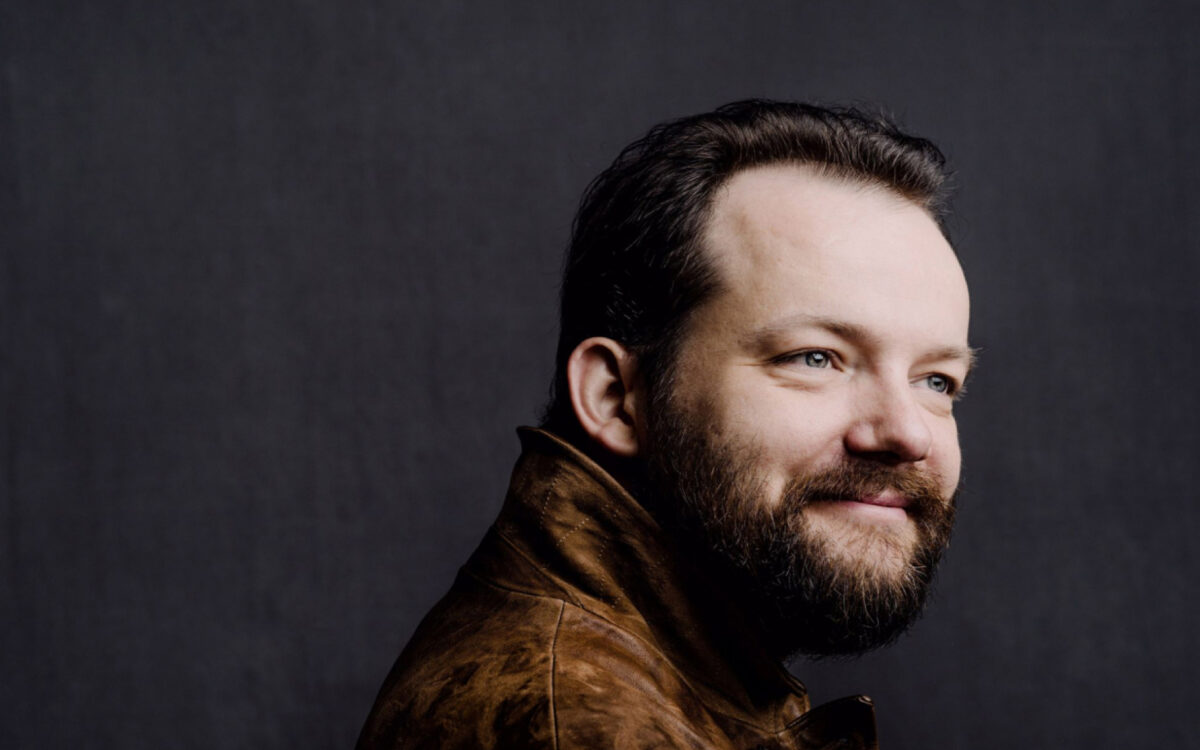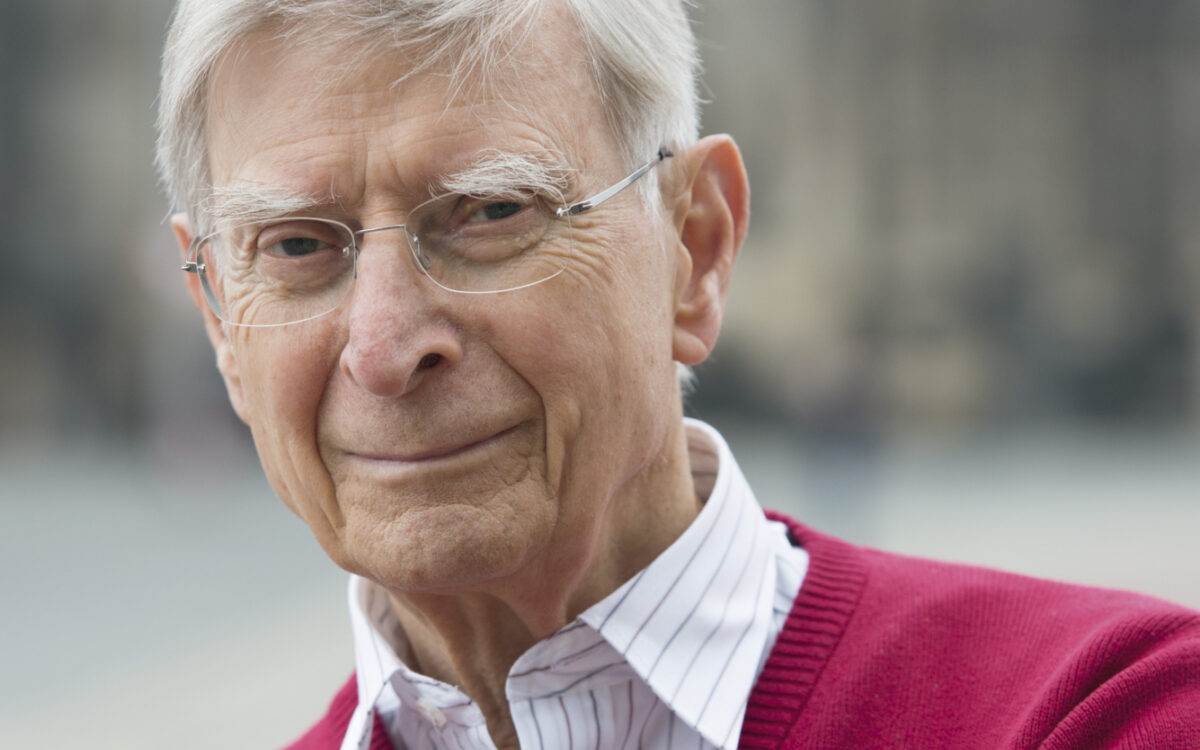Symphony No. 1 in C minor, Opus 68
Johannes Brahms was born in Hamburg, Germany, on May 7, 1833, and died in Vienna on April 3, 1897. He completed his First Symphony in 1876, though some of the sketches date back to the 1850s. Otto Dessoff conducted the first performance on November 4, 1876, at Karlsruhe.
Brahms’s Symphony No. 1 is scored for 2 flutes, 2 oboes, 2 clarinets, 2 bassoons, contrabassoon, 4 horns, 2 trumpets, 3 trombones, timpani, and strings.
When Brahms finished his First Symphony in September 1876, he was 43 years old. (Beethoven was 29, Schubert 15, Schumann 22, and Mahler 28 at the completion of their respective first symphonies; Mozart was 8 or 9, but that’s another story altogether.) As late as 1873, the composer’s publisher Simrock feared that a Brahms symphony would never happen (“Aren’t you doing anything anymore? Am I not to have a symphony from you in ’73 either?” he wrote the composer on February 22), and Eduard Hanslick, in his review of the first Vienna performance, noted that “seldom, if ever, has the entire musical world awaited a composer’s first symphony with such tense anticipation.”
Brahms already had several works for orchestra behind him: the Opus 11 and Opus 16 serenades, the D minor piano concerto (which emerged from an earlier attempt at a symphony), and that masterwork of orchestral know-how and control, the Variations on a Theme by Haydn. But a symphony was something different and had to await the sorting out of Brahms’s complicated emotional relationship with Robert and Clara Schumann (only after Robert’s death in 1856 could Brahms finally begin to accept that his passion for the older Clara had to remain unrequited), and, more important, of his strong feelings about following in Beethoven’s footsteps.
Beethoven’s influence is certainly to be felt in Brahms’s First Symphony: in its C minor-to-major progress; in the last-movement theme resembling the earlier composer’s Ode to Joy—a relationship Brahms himself acknowledged as something that “any ass could see” (perhaps less obvious is the relationship between the theme itself and the slow-moving violin phrase of the last movement’s opening measures); and, perhaps most strikingly, in the rhythmic thrust and tight, motivically based construction of the work—in some ways quite different from the melodically expansive Brahms we encounter in the later symphonies. But at the same time, there is really no mistaking the one composer for the other: Beethoven’s rhythmic drive is very much his own, whereas Brahms’s more typical expansiveness is still present throughout this symphony, and his musical language is unequivocally 19th-century-Romantic in manner.
Following its premiere at Karlsruhe on November 4, 1876, and its subsequent appearance in other European centers, the symphony elicited conflicting reactions. Brahms himself had already characterized the work as “long and not exactly amiable.” Clara Schumann found the ending “musically, a bit flat…merely a brilliant afterthought stemming from external rather than internal emotion.” Hermann Levi, court conductor at Munich and later to lead the 1882 Bayreuth premiere of Wagner’s Parsifal, found the two middle movements out of place in such a sweeping work, but the last movement he decreed “probably the greatest thing [Brahms] has yet created in the instrumental field.” The composer’s close friend Theodor Billroth described the last movement as “overwhelming,” but found the material of the first movement “lacking in appeal, too defiant and harsh.”
One senses in these responses an inability to reconcile apparently conflicting elements within the work, and the two inner movements do indeed suggest a world quite different from the outer ones. At the same time, these reactions also point to the seeming dichotomy between, as Eduard Hanslick put it, “the astonishing contrapuntal art” on the one hand and the “immediate communicative effect” on the other. But the two go hand in hand: the full effect of the symphony is dependent upon the compositional craft that binds the work together in its progress from the C minor struggle of the first movement through the mediating regions of the Andante and the Allegretto to the C major triumph of the finale.
The first Allegro’s two principal motives—the three eighth-notes followed by a longer value, suggesting an abstraction of the opening timpani strokes, and the hesitant, three-note chromatic ascent across the bar, heard at the start in the violins—are already suggested in the sostenuto introduction, which seems to begin in mid-struggle. The movement is prevailingly somber in character, with a tension and drive again suggestive of Beethoven. The second idea’s horn and wind colorations provide only passing relief: their dolce and espressivo markings will be spelled out at greater length in the symphony’s second movement.
The second and third movements provide space for lyricism, for a release from the tension of the first. The calmly expansive oboe theme of the E major Andante is threatened by the G-sharp minor of the movement’s middle section (whose sixteenth-note figurations anticipate the main idea of the third movement), but tranquility prevails when the tune returns in combined oboe, horn, and solo violin. The A-flat Allegretto is typical of Brahms in a grazioso mood—compare the Second Symphony’s third movement, or the finale of the Piano Concerto No. 2—and continues the respite from the main battle. And just as the middle movements of the symphony are at an emotional remove from the outer ones, so too are they musically distant, having passed from the opening C minor to third-related keys: E major for the second movement and A-flat major for the third.
At the same time, the third movement serves as preparation for the finale: its ending seems unresolved, completed only when the C minor of the fourth movement, again a third away from the movement that precedes it, takes hold. As in the first movement, the sweep of the finale depends upon a continuity between the main Allegro and its introduction. This C minor introduction gives way to an airy C major horn call (originally conceived as a birthday greeting to Clara Schumann in 1868) which becomes a crucial binding element in the course of the movement. A chorale in the trombones, which have been silent until this movement, brings a canonic buildup of the horn motto and then the Allegro with its two main ideas: the broad C major tune suggestive of Beethoven’s Ninth, and a powerful chain of falling intervals, which crystallize along the way into a chain of falling thirds, Brahms’s musical hallmark. The movement drives to a climax for full orchestra on the trombone chorale heard earlier and ends with a final affirmation of C major—Brahms has won his struggle.
Marc Mandel
Marc Mandel, former Director of Program Publications for the Boston Symphony Orchestra, joined the staff of the BSO in November 1978 and managed the orchestra’s program book from 1979 until his retirement in July 2020.
The first American performance of the Schubert Sixth was given at Theodore Thomas’s Summer Nights Concerts in New York’s Central Park Gardens on June 22, 1875.
The first American performance of Brahms’s Symphony No. 1 was given by Leopold Damrosch on December 15, 1877, in New York’s Steinway Hall. The first Boston performance was given by Carl Zerrahn on January 3, 1878, in a Harvard Musical Association concert at the Music Hall.
The first Boston Symphony performance of Brahms’s Symphony No. 1 was during the orchestra’s inaugural season, on December 10, 1881, under Georg Henschel.



